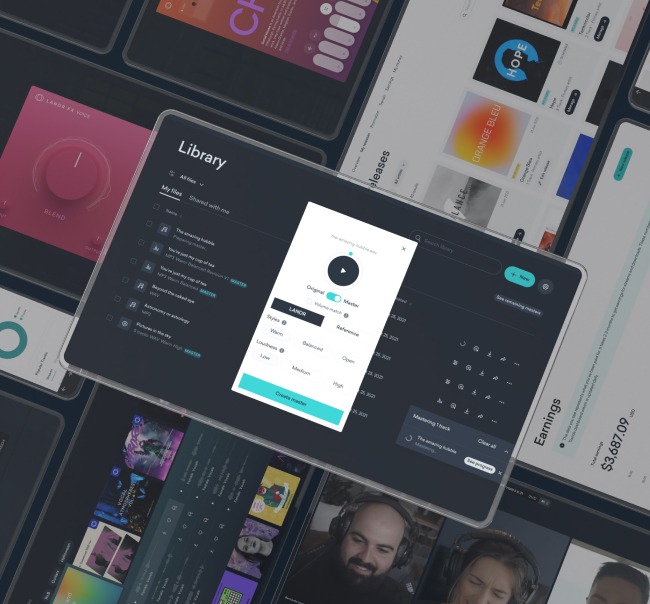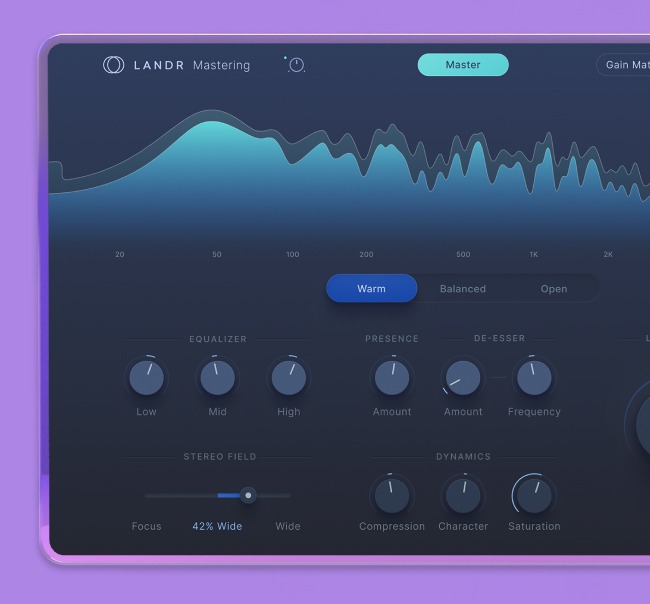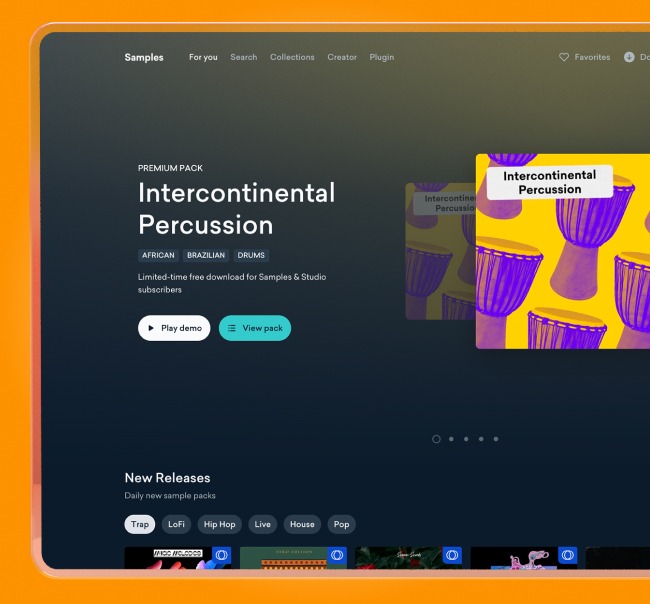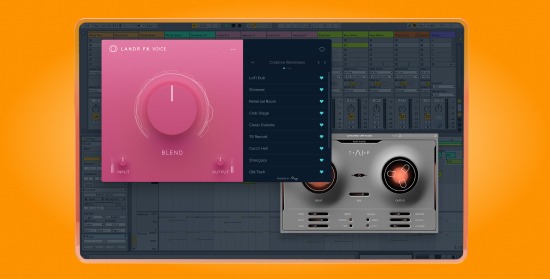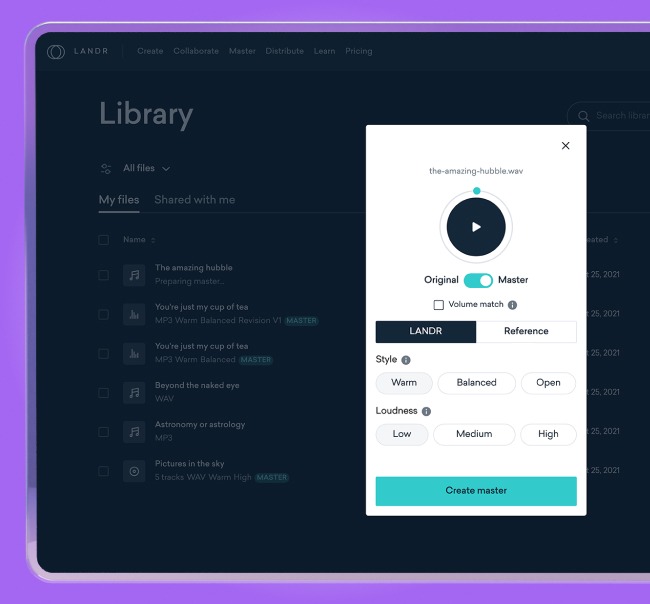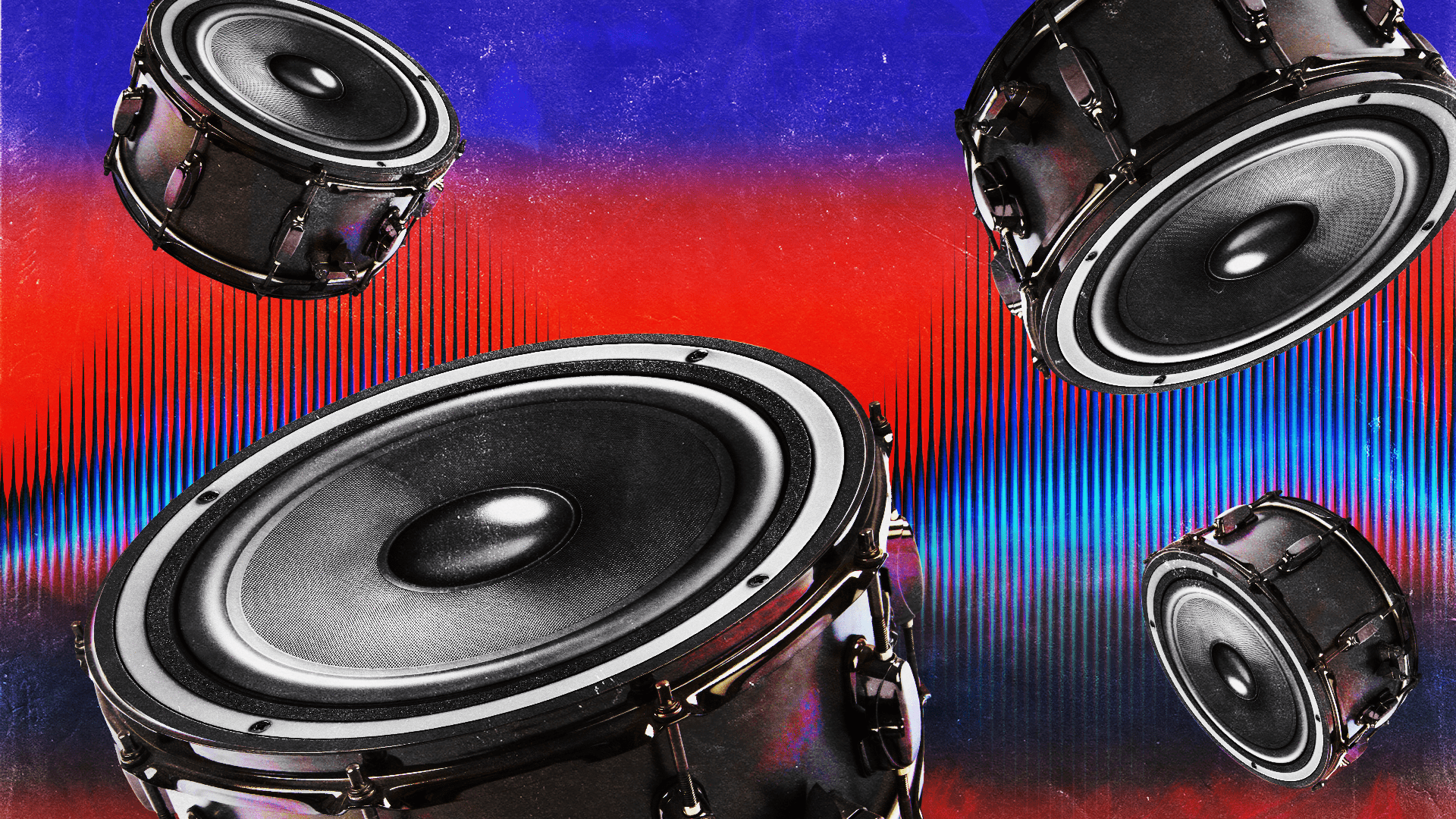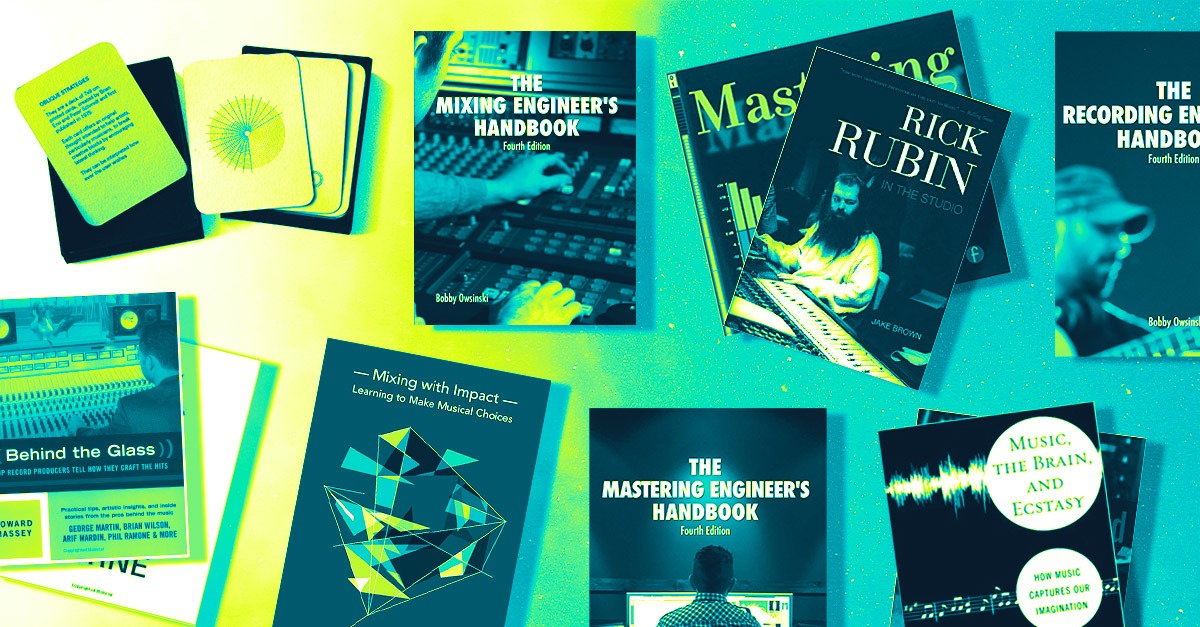
Music Production: How to Make and Release Music

Want to learn how to produce your first song?
Music production refers to every stage in the creation of a song — from songwriting to the final master. In this article, we’ll guide you through the process of setting up your first bedroom studio, working with a DAW, composing your first track, sound design, sampling, recording, mixing, mastering, and ultimately releasing your music.
How to Produce Music
- Music production software and equipment
- Producing music in a DAW
- Songwriting and composition: create a song
- Sound design: Build the sound you hear in your head
- Samples, plugins and MIDI: Your digital sound tools
- Sound recording: Capture the world around you
- Mixing music: Blend your sounds together
- Music mastering: the definitive version of your song
What is music production?
Music production refers to the process of creating recorded music, typically involving stages like composing, arranging, recording, editing, mixing, and mastering. Producers often use digital audio workstations (DAWs) to build and organize tracks, apply effects, and shape the sound. Recording captures vocals and instruments, while mixing balances audio elements and adds effects. Mastering finalizes the track for distribution.
What does a music producer do?
A music producer helps guide the creation of a song or album through various stages such as songwriting, arrangement, digital or analog recording, mixing, and mastering. Producers may use digital audio workstations (DAWs) to build instrumentals, structure tracks, or apply effects. Some producers work closely with artists on vocal delivery, song structure, or creative direction. Others focus more on the technical aspects like sound design or audio engineering. Their role can change depending on the genre, the artist’s needs, or the production setup.
1. Music production software and equipment
To produce music you’ll need music production software and a few main pieces of equipment.
Don’t worry—music production setups can vary a lot. You don’t need tons of expensive gear to get started as a producer.
But you will need a handful of key pieces of equipment, like a computer, a DAW and headphones.
I could list everything individually, but if you want the best advice for building a music production setup with any budget, go check out our Bedroom production guide.
Once you’ve got the basics of home studio, there’s some other production tools you can add, depending on what suits your workflow.
Many producers create entire tracks using only their DAW—but just as many others prefer the tactile experience and hands-on control of hardware.
Synths, drum machines, grooveboxes and effects pedals are fun and inspiring equipment to add to your setup.
More reading on music production software and equipment
- How to Build a Home Studio No Matter Your Budget
- The 8 Best USB-C Audio Interfaces in 2025
- The 10 Best Microphones for Recording Vocals at Any Budget
- The 10 Best DAWs (Digital Audio Workstations) for 2025
- The 8 Best Audio Recording Computers For Your Studio in 2025
- The 10 Best DAW Controllers for Hands-On Production
2. Producing music in a DAW
Your DAW is the digital home for your music production.
In a traditional recording studio, the DAW would be the tape machine—but it’s so much more that.
Your DAW is the perfect environment for every step of your music production workflow.
Many producers prefer to write in their DAW by creating loops and clips of their ideas on the fly.
Structuring isolated fragments into full arrangements is one of the biggest strengths of a DAW-based songwriting workflow.
And mixing has never been easier than with a DAW and plugins.
However you use it, the DAW is where your inspiration and workflow collide, and the production process takes place.
More reading and guides to today’s top DAWs
- Logic Pro Tutorial: How to Use Logic Pro (Tips for All Levels)
- Ableton Live: The Ultimate Overview for Producers
- Logic vs. Ableton: The Ultimate DAW Comparison
- FL Studio: The Ultimate Guide for Beginners
- What is a DAW? Your Guide to Digital Audio Workstations
3. Songwriting and composition: create a song
Some songwriters produce. Some producers write songs. The boundary between artist and producer isn’t always a bright line.
That means knowing the basics of songwriting and composition is important for modern producers.
The producer often has to make tough decisions when something isn’t working. Is it the mix? Or the arrangement?
Is it the parts, or the tones? Or the effects? Is this song boring, or does it just have the wrong song structure?
These are the types of questions an experienced producer should be able to answer.
To help you develop these skills, we put together an exhaustive list of resources for producers looking to learn songwriting, arrangement and music theory in general.
More reading on songwriting
- Parts of a Song: How to Use Song Structure In Music
- 23 Songwriting Tips & Techniques That Actually Work
- How to Write a Song: 10 Tips from Famous Artists
- Refrain vs. Chorus: How to Build a Memorable Peak for Your Song
- Song Hooks: 6 Ideas to Help You Write Catchier Music
- Bridge in Music: How to Tie Your Song Together
4. Sound design: Build the sound you hear in your head
Sound design is how you create the tone and texture of the sounds in your music production.
It can refer to anything from crate digging for samples to designing synthesizer patches to experimenting with effects chains.
Any method you use to arrive at the unique sound palette you use in your sessions can be considered sound design.
With such a broad definition, it can be hard to know where to start. But sound design is one of the most crucial steps in music production.
The type of sounds you use in your music defines the unique identity of your tracks.
One way to make sense of sound design is by starting with the workflow that inspires most and go from there.
That’s why we put together the essential sound design resource for all production styles.
Read more about sound design and synthesis:
- Subtractive Synthesis: Learn Synthesizer Sound Design
- Sound Design: 7 Ways to Create Your Perfect Sound
- FM Synthesis: Everything You Need to Know to Get Started
- What are Soundscapes? 4 Inspiring Techniques for Ambient Sound
- ADSR Envelopes: How to Build The Perfect Sound
5. Samples, plugins and MIDI: Your digital sound tools
Your DAW is your studio centrepiece. But the digital tools you use inside it are just as important in your music production workflow.
MIDI is the language that lets you communicate music in the digital world. It’s the information you enter in the piano to control your synths, samplers and drum machines.
It’s the data your MIDI controller sends when you hit a key, strike a pad, turn an encoder or press down your sustain pedal.
Plugins are the virtual instruments and effects that create tones and textures in your mix.
Your DAW comes with a completely functional set of built-in plugins, but there’s a whole world of exciting plugins out there. Some are even available completely free.
Building your own unique set of inspiring plugins is part of developing your palette as a producer.
Last but not least, samples are snippets of audio you can use in your productions in any way you see fit.
These audio puzzle pieces can be anything from individual drum hits or short instrumental melodies to entire tracks or rhythmic loops.
Samples are used in almost every genre of music you can think of—they’re one of the most inspiring parts of being a producer.
Read more about samples, plugins and MIDI
- The 40 Best Free VST Plugins in 2025
- The 10 Best Pitch Correction Plugins Tested for Any Budget
- What Is MIDI? How To Use the Most Powerful Tool in Music
- MIDI Editing: 6 Essential Tips for Better MIDI Tracks
- Music Trends 2025: Future Insights from LANDR Samples
- Sound Selection: How to Curate Samples and Make Better Beats
6. Sound recording: Capture the world around you
Recording audio tracks is another massive pillar of music production.
Some producers’ entire workflow is based on recording and manipulating audio tracks. This production style is common for bands, singer-songwriters and acoustic music.
But producers of all genres often have to deal with recording the traditional way with microphones, especially if they have vocals in their tracks.
Getting a great sound by recording with mics is a big challenge, but it’s not impossible.
In fact, there are a few ways to make sure that your recorded sound is the best you can possibly make it
Dive into our resources for how to record music and audio:
Read more about recording music
- The 10 Best Microphones for Recording Vocals at Any Budget
- Sound Recording: Everything You Need to Know to Get Started
- Field Recording: 10 Ways to Use Found Sound in Your Production
- Recording Vocals at Home: 9 Big Mistakes and How to Avoid Them
- Home Recording: How to Build the Perfect Studio On Any Budget
7. Mixing music: Blend your sounds together
Mixing music is the art of taking recorded tracks and blending them together to create a balanced sound where all the elements sound pleasant and can be heard clearly.
It’s the process in music production that makes your raw tracks into a coherent whole that’s satisfying to hear and easy to understand.
The main tools used during the mixing phase of music production are EQ, compression and reverb.
Applying these processors musically is the key to creating a great sounding mix.
Mixing can be difficult and takes a long time to learn well.
But once you get familiar with the basic concepts, you can start taking control of how the tracks in your session interact.
Read more about mixing:
- How to Mix Music: The Beginner’s Guide
- Mixing in Ableton: 7 Tips For a Better Mix Workflow in Live
- Channel Strip Plugins: The 8 Best All-in-one Mixing Channels
- How to Mix Bass: 5 Tips for Mixing Bass to Get Powerful Low End
- Mixing Beats: How to Mix Hip-Hop, Trap, Electronic and Beyond
8. Music mastering: the definitive version of your song
Mastering is the final step in your music production process.
It’s the phase where your mix gets the final polish and presentation for how your listeners will actually experience it.
The purpose of mastering is to balance the sonic elements in a stereo mix and optimize playback across all systems and media formats.
Music has never been available in more formats and devices than today.
It doesn’t matter if you’re mixing in a million dollar studio or tracking in less than ideal conditions, you still need the final quality check of mastering.
This step ensures that your sound will be heard the way you intended it to be.
It also provides the glue that gives an album consistent sound across all tracks. Without mastering, individual songs can sound disjointed in relation to each other.
Mastering is a crucial part of the music production process, but it doesn’t have to be scary.
Check out our suite of resources to learn everything you need to know about mastering.
Read more about mastering:
- What is mastering?
- How to Master an Album With Mastering Plugins
- Mastering EQ: Frequency Balance in Mastering Explained
- Mastering Compression: How Compressors Work In Your Master
- Mixing and Mastering: The Producers’ Guide to Finishing a Song
Create, master and release with LANDR
Music production is more accessible than it’s ever been. That means that there’s never been a better time to dive in and start learning how to produce music. Use the resources in this guide to start your journey with music production.
Ready to start your music production journey? Find all the tools you need to create, master and release music with LANDR Studio. LANDR Studio gives you access to industry standard DAWs like Ableton Lite, 40+ professional music plugins from LANDR Plugins including Synths, Compressors, Samplers and Effect plugins, 3m+ music samples from LANDR Samples and unlimited distribution with LANDR Distribution. Find out more about LANDR Studio on https://www.landr.com.
Gear guides, tips, tutorials, inspiration and more—delivered weekly.
Keep up with the LANDR Blog.
